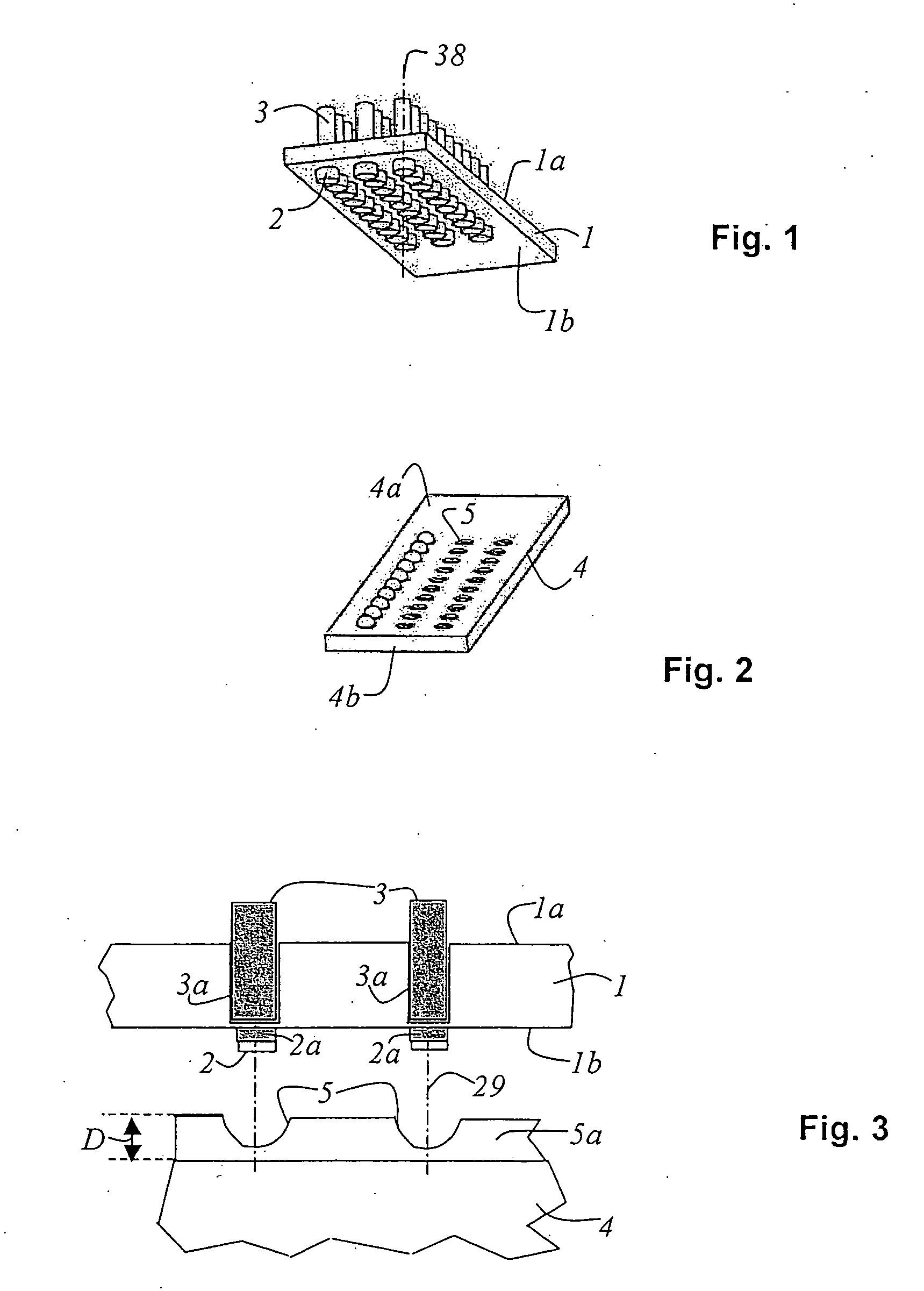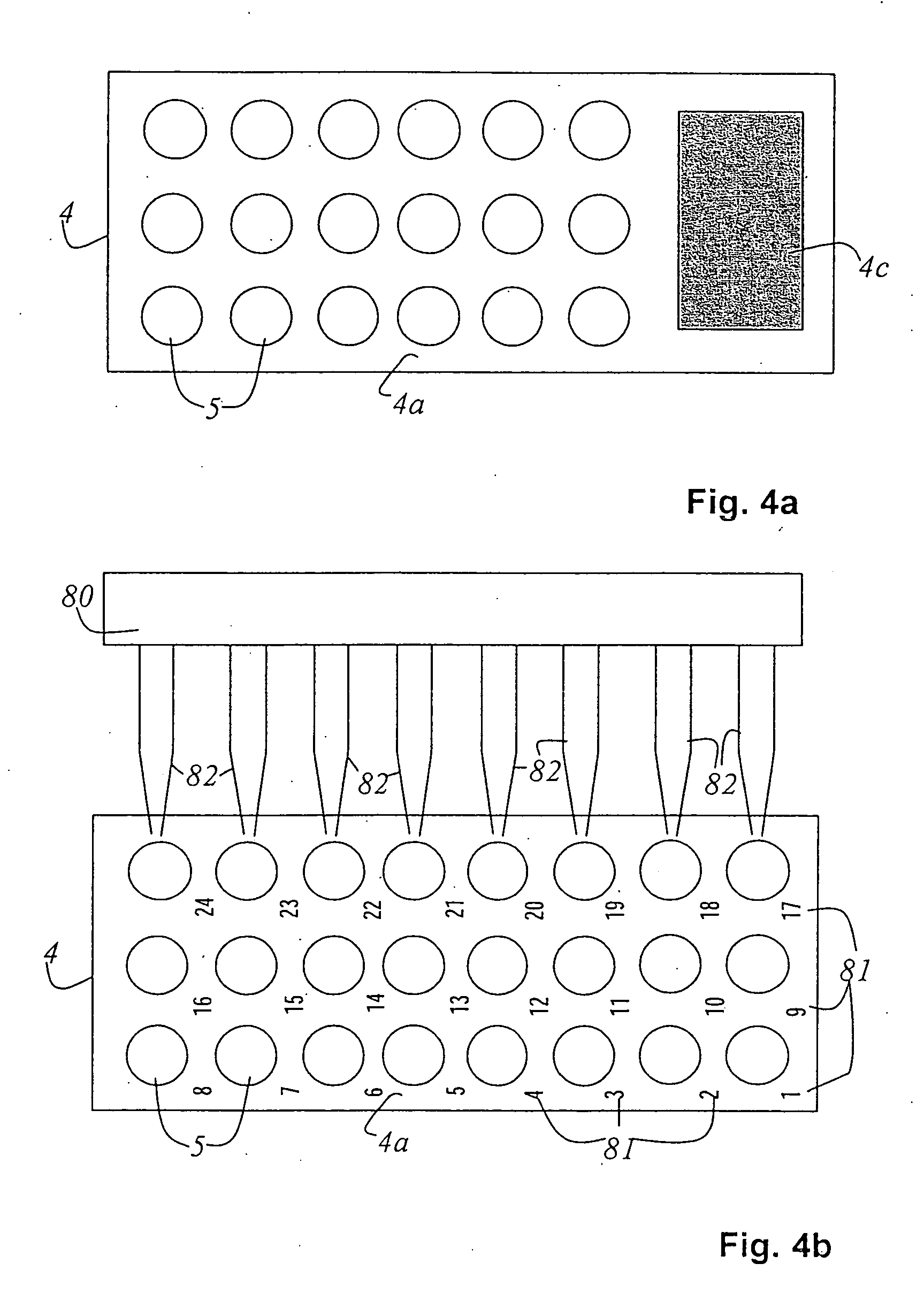Apparatus and method for immunological labeling for thin tissue sections
a technology of immunological labeling and apparatus, applied in the direction of biochemistry apparatus, biochemistry apparatus and processes, preparing samples for investigation, etc., can solve the problems of high labor costs, large number of samples to be processed simultaneously, and constant attention to the process of the operator
- Summary
- Abstract
- Description
- Claims
- Application Information
AI Technical Summary
Benefits of technology
Problems solved by technology
Method used
Image
Examples
Embodiment Construction
[0044]FIG. 1 shows a carrier plate 1 that defines an upper side 1a and a lower side 1b. On lower side 1b, carrier plate 1 possesses marked positions at which metal grids 2 having thin tissue sections 2a (see FIG. 3) are positioned. The positions of metal grids 2 on carrier plate 1 are elevated. This prevents liquid bridges from forming between the individual metal grids 2 upon contact with the liquid droplets. Located on upper side 1a of carrier plate 1, opposite the positions of metal grids 2, are orifices 3a (see FIG. 3) which contain magnets 3, for example permanent magnets. They cause metal grids 2 to be held in place on lower side 1b of carrier plate 1 by magnetic force. The spacing between metal grid 2 and magnet 3 should be kept as small as possible (1 is preferably made of a dimensionally stable nonmagnetic material, preferably aluminum, brass, or fiber-reinforced plastics, and advantageously is hydrophobically coated (e.g. with a Teflon pressure coating) on lower side 1b th...
PUM
| Property | Measurement | Unit |
|---|---|---|
| residence time | aaaaa | aaaaa |
| diameter | aaaaa | aaaaa |
| size | aaaaa | aaaaa |
Abstract
Description
Claims
Application Information
 Login to View More
Login to View More - R&D
- Intellectual Property
- Life Sciences
- Materials
- Tech Scout
- Unparalleled Data Quality
- Higher Quality Content
- 60% Fewer Hallucinations
Browse by: Latest US Patents, China's latest patents, Technical Efficacy Thesaurus, Application Domain, Technology Topic, Popular Technical Reports.
© 2025 PatSnap. All rights reserved.Legal|Privacy policy|Modern Slavery Act Transparency Statement|Sitemap|About US| Contact US: help@patsnap.com



